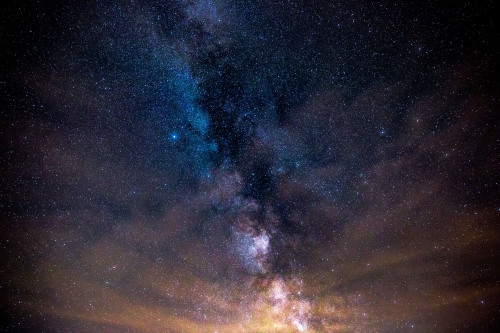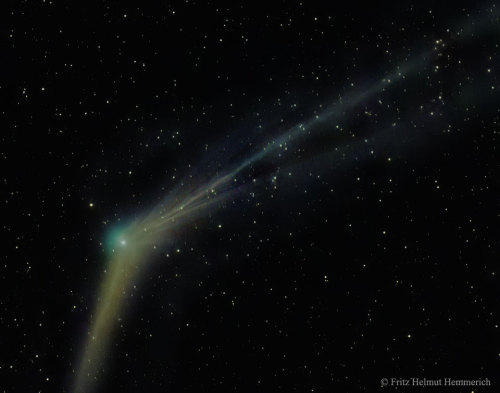(NASA)
(NASA)
The Juno spacecraft just recorded these creepy sounds around Jupiter
Via Science Alert

More Posts from Littlecadet-biguniverse and Others

Enceladus, the sixth-largest moon of Saturn
js

a night with the stars will usually help
By: Jonah Reenders
Bubble Nebula by Hubble Heritage Via Flickr: For the 26th birthday of NASA’s Hubble Space Telescope, astronomers are highlighting a Hubble image of an enormous bubble being blown into space by a super-hot, massive star. The Hubble image of the Bubble Nebula, or NGC 7635, was chosen to mark the 26th anniversary of the launch of Hubble into Earth orbit by the STS-31 space shuttle crew on April 24, 1990. The Bubble Nebula is 7 light-years across — about one-and-a-half times the distance from our sun to its nearest stellar neighbor, Alpha Centauri. The Bubble Nebula was discovered in 1787 by William Herschel, a prominent British astronomer. It is being formed by a prototypical Wolf-Rayet star, an extremely bright, massive, and short-lived star that has lost most of its outer hydrogen and is now fusing helium into heavier elements. The star is about 4 million years old, and in 10 million to 20 million years, it will likely detonate as a supernova.
Credit: NASA, ESA, and the Hubble Heritage Team (STScI/AURA) heritage.stsci.edu/2016/13/ hubbledev.stsci.edu/newscenter/archive/releases/2016/13/

The California Nebula.

This beautiful supernova remnant is the product of a huge stellar explosion in our neighboring galaxy — the Small Magellanic Cloud (📷 : NASA)

Galaxy Trio Arp 286:
NGC 5566 (bottom), NGC 5569 (left), & NGC 5560 (center)

Cargo transfer bags come in various sizes. I actually fit into this one and as a joke, Thomas and Shane took me over to the Russian segment, zipped inside. They told them there was a present inside and opened it up. I popped out and gave them a good surprise!

Milky Way js

Comet Catalina Emerges : Comet Catalina is ready for its close-up. The giant snowball from the outer Solar System, known formally as C/2013 US10 tails, making it an impressive object for binoculars and long-exposure cameras. The featured image was taken last week from the Canary Islands, off the northwest coast of Africa. Sky enthusiasts around the world will surely be tracking the comet over the next few months to see how it evolves. via NASA
js
-
 pingtopong liked this · 1 year ago
pingtopong liked this · 1 year ago -
 romancevsreality liked this · 1 year ago
romancevsreality liked this · 1 year ago -
 bsendzxy liked this · 6 years ago
bsendzxy liked this · 6 years ago -
 thecountessofcats reblogged this · 7 years ago
thecountessofcats reblogged this · 7 years ago -
 braceman72 liked this · 7 years ago
braceman72 liked this · 7 years ago -
 the-backup-jesus reblogged this · 8 years ago
the-backup-jesus reblogged this · 8 years ago -
 milankyuubi reblogged this · 8 years ago
milankyuubi reblogged this · 8 years ago -
 sourzz reblogged this · 8 years ago
sourzz reblogged this · 8 years ago -
 irkalla reblogged this · 8 years ago
irkalla reblogged this · 8 years ago -
 quagmire-sapphire reblogged this · 8 years ago
quagmire-sapphire reblogged this · 8 years ago -
 theblogformerlyknownasmila-blog liked this · 8 years ago
theblogformerlyknownasmila-blog liked this · 8 years ago -
 moon-university reblogged this · 8 years ago
moon-university reblogged this · 8 years ago -
 ihrlaa reblogged this · 8 years ago
ihrlaa reblogged this · 8 years ago -
 suburbangothc reblogged this · 8 years ago
suburbangothc reblogged this · 8 years ago -
 evenstwink-blog reblogged this · 8 years ago
evenstwink-blog reblogged this · 8 years ago -
 shetillstheearth liked this · 8 years ago
shetillstheearth liked this · 8 years ago -
 yinofyang liked this · 8 years ago
yinofyang liked this · 8 years ago -
 greatmidwesterncasserole reblogged this · 8 years ago
greatmidwesterncasserole reblogged this · 8 years ago -
 moltensappho reblogged this · 8 years ago
moltensappho reblogged this · 8 years ago -
 moltensappho liked this · 8 years ago
moltensappho liked this · 8 years ago -
 aealoarcturus liked this · 8 years ago
aealoarcturus liked this · 8 years ago -
 coldcannibalking reblogged this · 8 years ago
coldcannibalking reblogged this · 8 years ago -
 darkkestdruug reblogged this · 8 years ago
darkkestdruug reblogged this · 8 years ago -
 flyingmachine1 liked this · 8 years ago
flyingmachine1 liked this · 8 years ago -
 alex-on-the-enterprise liked this · 8 years ago
alex-on-the-enterprise liked this · 8 years ago -
 smileexists1d liked this · 8 years ago
smileexists1d liked this · 8 years ago -
 toyouthereisnoequal liked this · 8 years ago
toyouthereisnoequal liked this · 8 years ago -
 courtneyxthorne liked this · 8 years ago
courtneyxthorne liked this · 8 years ago -
 420infinity-and-beyond420-blog reblogged this · 8 years ago
420infinity-and-beyond420-blog reblogged this · 8 years ago -
 annad58 liked this · 8 years ago
annad58 liked this · 8 years ago -
 clonedp-blog liked this · 8 years ago
clonedp-blog liked this · 8 years ago
GREETINGS FROM EARTH! Welcome to my space blog! Let's explore the stars together!!!
144 posts